Turn Calming Program
The Turn Calming program is a citywide effort to reduce left and right turn speeds and enforce safe turning behavior. This program is part of the Vision Zero initiative to eliminate traffic fatalities and reduce severe injuries.
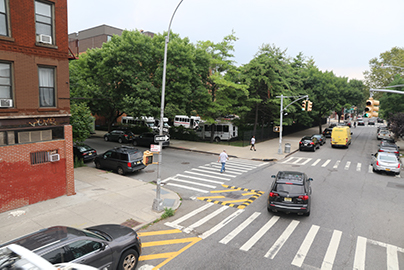
NYC DOT began the program as part of the Left Turn Study Action Plan to address failure to yield crashes caused by left turning vehicles. The program has improved 1101 intersections with turn calming treatments citywide (as of December 31, 2024).

NYC DOT chooses locations for Turn Calming treatments by reviewing several criteria including crash injuries, lane configuration and effect on large vehicles’ turning movements. View a list of locations with Turn Calming treatments.
View an interactive map of Turn Calming treatments citywide (2016 to 2024), along with other safety information.
Turn Calming Treatments
Turn Calming treatments address intersections with problematic left and right turns, and may be installed at a variety of intersections such as:
Basic Hardened Centerline (Left Turns)
Installed where one-way or two-way road meets at two-way road
The Basic Hardened Centerline treatment consists of five pieces of rubber curb and bollards and/or rubber speed bumps installed on the centerline and extending at maximum of six feet into the intersection. Since 2016, this treatment has been installed at 756 locations, including West End Avenue and 96th Street in Manhattan.
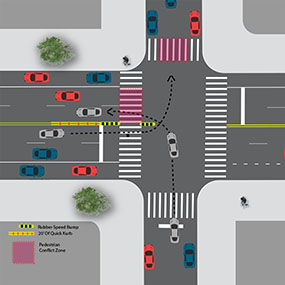
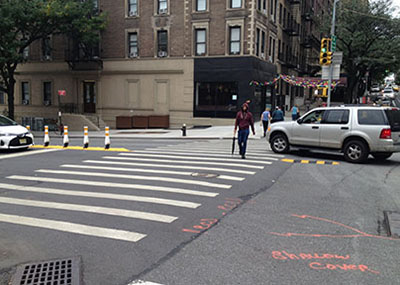
Complete Hardened Centerline (Left Turns)
Installed where one-way road meets a two-way road
The Complete Hardened Centerline treatment includes five pieces of rubber curb and bollards and/or rubber speed bumps, “No Parking” markings and slow turn wedge/box markings coupled with flexible plastic posts. Since 2016 this treatment has been installed at 115 locations, including Grand Avenue and West Burnside Avenue in the Bronx.
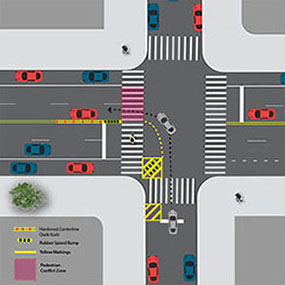
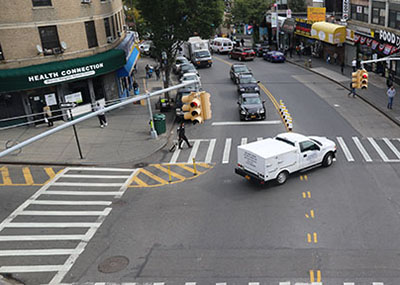
Slow Turn Wedge (Left & Right Turns)
Installed where one-way road meets a one-way road
The Slow Turn Wedge treatment consists of "No Parking" markings as well as a marked slow turn wedge/box coupled with flexible plastic posts or rubber speed bumps. Since 2016 this treatment has been installed at 161 locations citywide, including Lexington Avenue and 33rd Street in Manhattan.
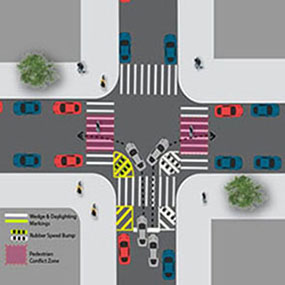
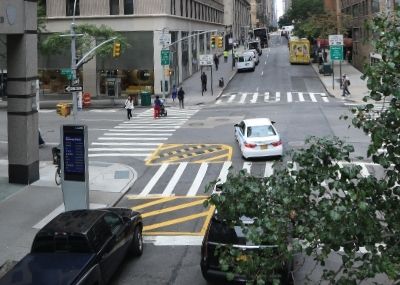
Bike Island Channelization (Left Turns)
Installed where one-way road meets a one-way with a protected bike lane
The Bike Island Channelization treatment is only installed adjacent to existing bike islands. It consists of a Bike Island Channelization box with flexible plastic posts or rubber speed bumps. Since 2017 this treatment has been installed at 41 citywide locations, including Amsterdam Avenue and 88th Street in Manhattan.
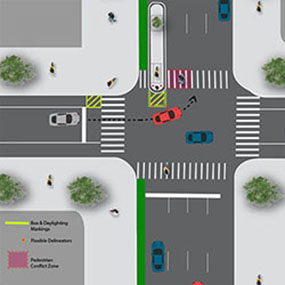
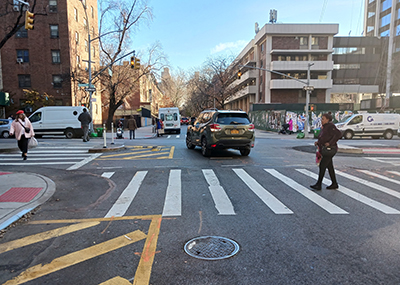
Median Extension (Left Turns)
Installed where one-way or two-way road meets a two-way road
The Median Extension treatment is only installed adjacent to existing concrete or painted medians. It consists of yellow wedge or box markings with flexible posts or rubber speed bumps. Since 2017 this treatment has been installed at 61 citywide locations, including Lenox Avenue and 124th Street in Manhattan.


Left Turn Traffic Calming: Bike Island Channelization Video
Definition of Materials
Quick Kurb
This device separates lanes of traffic as well as for calming left turns and delineating no parking areas. It is composed of a 2.38-inch-high base, end caps and a 37-inch bollard. It comes in yellow or white depending on placement and has reflective tape.
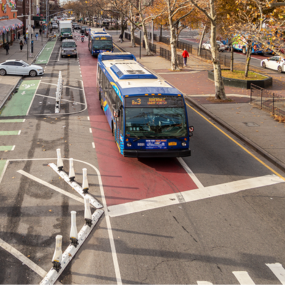
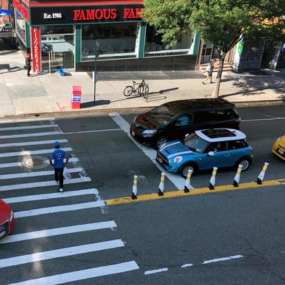
Flexible Delineators or Davidsons
This device delineates pedestrian-only spaces, bike lanes, no parking areas and to calm left turns. It is composed of a circular base and a 36-inch post that can be yellow or white based on placement and has reflective tape.
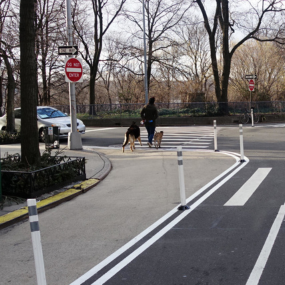
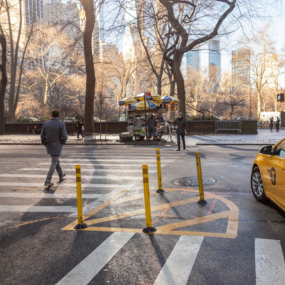
Rubber Speed Bumps
This device calms left and right turns, delineates bike and bus lanes, chicanes, roundabouts as well as speed cushion treatments. It is composed of 3.5 feet and 4.5 feet long sections with end caps which produce bumps that go from 4 feet to 20 feet long. It is 2.25 feet high. It can have yellow or white stripes depending on positioning.
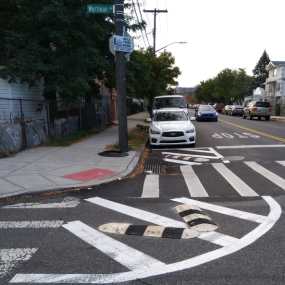
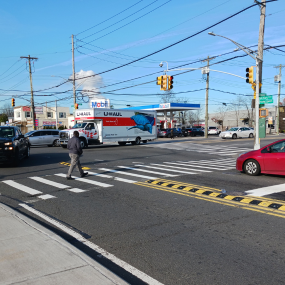
Turn Calming Safety Results
In New York City intersections where Turn Calming treatments have been implemented, pedestrian injuries have declined faster than nearby comparable locations. Moreover, Turn Calming treatments have led to considerable reduction in turning speeds.
Crash Reduction
- Pedestrian injuries have decreased by 18%
- Pedestrian severe injuries have decreased by 33%
- Senior pedestrian injuries have decreased by 19%
- Senior pedestrian KSI (killed or severely injured) have decreased by 60%
Speed Reduction
- Median left turn speeds have decreased by 54.3%
- Average left turn speeds have decreased by 52.6%
- 85th percentile left turn speeds have decreased by 59.8%
- Maximum left turn speeds have decreased by 37.7%
- Median right turn speeds have decreased by 32.7%
- Average right turn speeds have decreased by 34.1%
- 85th percentile right turn speeds have decreased by 47.2%
- Maximum right turn speeds have decreased by 48.7%
Vehicles are making safer turns as well; the rate of crossing the double yellow line while turning has dropped by 78.9% for locations that have a treatment extending to the stop bar and 100% for locations that have a treatment extending all the way to the crosswalk. NYC DOT expects to see a reduction in traffic injuries once enough before/after crash data becomes available.
Program Planning
NYC DOT is currently planning Phase 10 of this program, selecting additional intersections for treatment installation across the city.
